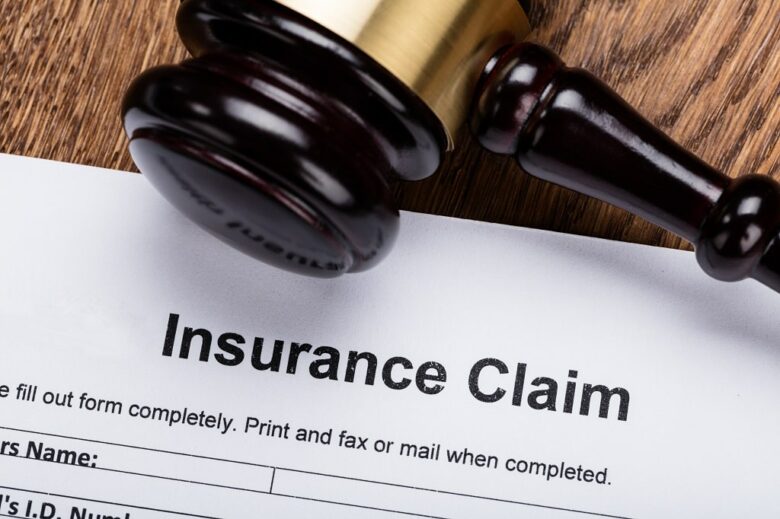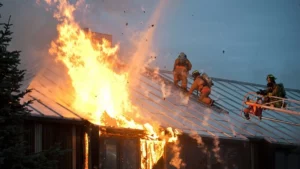Fire insurance is an essential safeguard for property owners, providing financial protection against the damage and destruction caused by fire. Whether it’s a home or a business property, fire insurance ensures peace of mind by covering the cost of repairs, replacements, and associated expenses. But how are fire insurance premiums determined? Several factors come into play, making it crucial to understand what influences the cost of your coverage. Below, we explore these factors to help you better understand how your premiums are calculated.
The Role of Location in Determining Fire Insurance Premiums
The location of a property is one of the most significant factors affecting fire insurance costs. Insurers assess the risk associated with a property’s geographic area to determine its susceptibility to fire hazards. For instance, if a property is located in a region prone to wildfires or in areas with a high crime rate where arson might be a concern, premiums are likely to increase. Similarly, a property positioned far from a fire station or lacking access to a reliable water source for firefighting efforts may see higher costs. Insurers evaluate these risks in considerable detail, which is why properties in urban areas with robust fire safety infrastructure may benefit from lower premiums compared to rural or hazard-prone locations.
Construction Materials and Their Impact on Fire Insurance
The materials used in the construction of a building are another important factor that influences fire insurance premiums. Fire-resistant materials such as brick and concrete typically lead to lower premiums because they are less likely to catch fire or sustain significant damage during a fire incident. On the other hand, buildings constructed primarily from wood or other flammable materials are considered high risk and, as a result, face higher premiums. Additionally, newer buildings with modern construction standards may be designed to minimize fire hazards, making them less expensive to insure compared to older properties that may lack updated safety features.
How Occupancy and Usage Affect Fire Insurance Costs
The way a property is used, or its “occupancy,” also plays a role in determining fire insurance costs. Residential properties generally pose a lower fire risk compared to certain types of commercial or industrial properties. For instance, a family home has fewer fire risk factors compared to a factory that uses flammable chemicals or a restaurant with a high likelihood of grease fires. Insurers also consider whether the property is occupied full-time, part-time, or vacant. Unoccupied properties are deemed higher risk because fire incidents may go unnoticed for longer periods, leading to greater damage. Even within residential settings, multi-family homes or shared buildings might have higher premiums due to the higher likelihood of accidents occurring.
The Impact of Fire Protection Measures on Premiums
Fire protection measures significantly influence the cost of fire insurance premiums. Properties equipped with effective fire safety features, such as smoke alarms, fire extinguishers, sprinkler systems, and fire-resistant doors, are generally seen as lower risk by insurers. Additionally, proximity to fire hydrants and access to fire stations can directly reduce premiums. Advanced systems like automated fire suppression or alarms linked to monitoring centers may further lower costs. Some insurers even offer discounts to properties that meet specific fire safety standards or certifications. Investing in quality fire protection not only enhances safety but also helps in reducing the financial burden of insurance.
How Claims History Impacts Fire Insurance Premiums
Your claims history is another critical factor that influences your fire insurance premiums. If you’ve filed fire-related insurance claims in the past, insurers may view you as a higher-risk client. This perception often results in higher premiums, as past claims suggest a greater likelihood of future incidents. On the flip side, a clean claims history can work to your advantage, fostering trust with the insurer and potentially qualifying you for lower costs. It’s important to avoid filing minor claims that might increase your premium in the long run and focus instead on preventing fire risks to maintain a good claims record.
The Effect of Policy Coverage Options on Fire Insurance Costs
The level of coverage you choose directly affects your fire insurance premiums. Policies with more comprehensive coverage tend to cost more because they cover a broader range of risks and offer higher reimbursement limits. Basic fire insurance policies may include coverage for structural damage, while additional options—such as coverage for contents, temporary living expenses, or natural disaster-related fires—can increase the premium. Similarly, choosing a lower deductible can raise your premium, as the insurer will cover a larger portion of damages in the event of a claim. Balancing cost with coverage needs is essential to ensure adequate protection without overpaying.
Protecting Yourself and Your Property with Fire Insurance
Understanding the factors that influence fire insurance premiums is crucial for property owners seeking the right balance of affordability and coverage. From location and construction materials to fire protection measures, claims history, and policy options, each element plays a unique role in shaping your premium. By proactively mitigating risks, investing in fire safety measures, and tailoring your coverage to fit your needs, you can secure a policy that offers both financial protection and peace of mind. Always consult with your insurer to discuss the factors affecting your property to ensure you’re getting the most out of your fire insurance plan.
Frequently Asked Questions (FAQ)
What is covered by a fire insurance policy?
Fire insurance policies often cover structural damage, loss or damage to personal belongings, and additional living expenses incurred due to a fire. Depending on the policy, coverage may also extend to natural disaster-related fires or reimbursement for lost business income.
How can I reduce my fire insurance premiums?
You can lower your premiums by installing fire protection measures, choosing fire-resistant construction materials, maintaining a good claims history, and selecting coverage that meets but does not exceed your needs. Always discuss available discounts with your insurer.
Do all fire insurance policies include contents coverage?
No, not all fire insurance policies include contents coverage by default. You may need to add this as an option or purchase a more comprehensive plan to ensure your belongings are protected.
How often should I review my fire insurance policy?
It’s advisable to review your fire insurance policy annually, especially if you’ve made changes to the property, such as renovations or the installation of fire safety features, as these can impact your premium.
Is fire insurance mandatory?
Fire insurance is not typically mandatory, but it is highly recommended. If you have a mortgage, your lender may require fire insurance coverage to protect their financial interest in the property.




